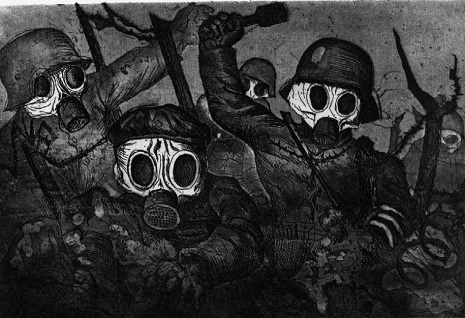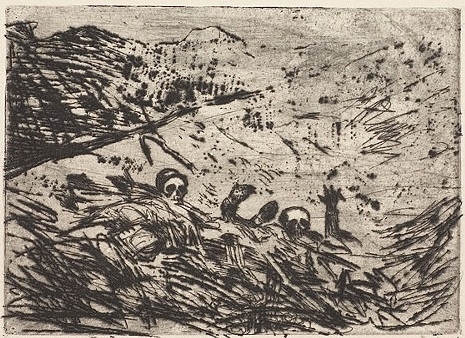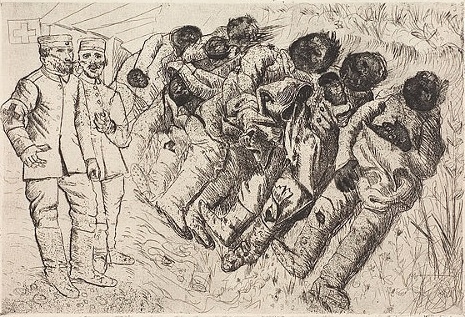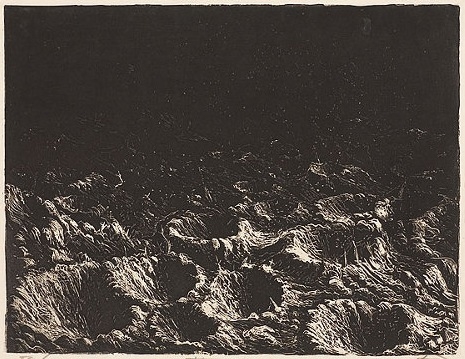
Stormtroopers Advancing Under Gas
When World War I broke out, German artist Otto Dix volunteered for the army. He spent three years amidst some of the most horrifying violence imaginable before being discharged a few weeks after the war’s end. He returned home with a nasty case of PTSD and a new artistic motivation, helping to form the progressive, pacifist artists’ collective, the Dresden Secession. In 1923, he debuted The Trench, an anti-war painting so disturbing the museum hid it behind a curtain. The Mayor of Cologne not only backed out of purchasing The Trench, he got the museum director fired for even displaying it.
A year later, he published Der Krieg, a collection of 50 etchings inspired by the war, a sampling of which you see here. The harsh lines and brutal textures exude a violent intensity that seems to accost the viewer. (If you recognize a bit of “gonzo” in the illustrations, you’re picking up on one of Ralph Steadman’s major influences.) Dix was quickly labeled a degenerate artist when the Nazis took power, and over 260 of his paintings were seized—many of them burned. For a long time The Trench was believed to have been among them, but a bill of sale exists from 1940, leaving many with the hope that it may still be rediscovered someday unharmed.
Although Dix was eventually absorbed into the Nazi propaganda machine, (forced to paint properly nationalist landscapes), he secretly continued to paint anti-Nazi art—many pieces were later found in the 2012 Munich artwork discovery. At one point Dix was even arrested under suspicion of trying to assassinate Hitler, but the accusation was spurious and he was released. In a horrible irony, the pacifist Dix was conscripted into the Volkssturm. He was eventually captured by the French, but he was released at war’s end, and lived to see his work like Der Krieg, extolled all over the world.

Soldier’s Grave Between the Lines

Buried Alive - January 1916, Champagne

Gas victims - Templeux-la-Fosse, August 1916

Crater Field Near Dontrien Lit Up by Flares
More after the jump…





